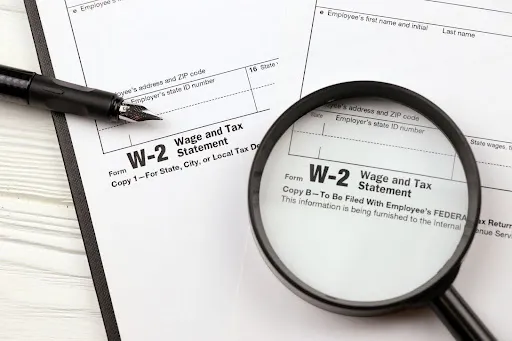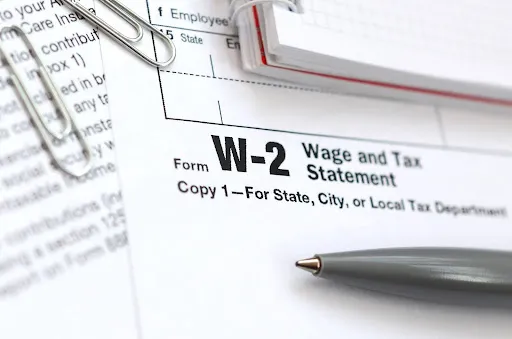
What is the Purpose of a W-2 Form?
The W-2 Form is a foundational document in the tax filing process, providing a detailed summary of an individual’s annual earnings and tax withholdings. As a link between employees, employers, and the IRS, it ensures transparency and accuracy in reporting income and taxes. Familiarity with its purpose and requirements helps streamline tax preparation and reduces the likelihood of errors or delays.
What is a W-2 Form, and Why is it Important?
A W-2 Form, officially known as the Wage and Tax Statement, is an annual document employers provide to employees. It details an individual’s total earnings, taxes withheld, and other financial information necessary for filing federal, state, and local tax returns. Employers send this form to the employee and the IRS to ensure accurate reporting of income and tax payments. This form is essential for maintaining compliance with tax laws and simplifying the filing process.
Accurate Tax Filing
The W-2 Form ensures employees report their income and taxes withheld accurately when filing their tax returns. Precise information helps calculate potential refunds or additional tax liabilities. Individuals risk errors that could lead to audits or penalties without this form. It serves as the primary reference for aligning personal records with IRS documentation.
Verification of Income
This form acts as official proof of income for employees, which is often required for loan applications, rental agreements, or financial aid requests. Lenders and institutions rely on the data provided to assess financial eligibility. Having a W-2 Form ensures employees can substantiate their earnings without delays. It also reflects contributions to Social Security and Medicare for transparency in government programs.
Legal Compliance for Employers
Employers are required by law to provide W-2 Forms to employees and submit copies to the IRS and Social Security Administration. Compliance with these requirements avoids fines and ensures that tax records are up-to-date. Proper form handling supports transparency between businesses and government agencies and helps companies maintain credibility with employees and authorities.
Facilitates Employee Benefits and Tax Credits
The W-2 Form provides information on retirement plan contributions, healthcare premiums, and other benefits, which can impact tax deductions or credits. It allows employees to identify opportunities to lower taxable income and maximize refunds. Accurate reporting of benefits ensures eligibility for tax-related advantages. This transparency helps employees make informed financial decisions regarding future planning.
Key Information Included in a W-2 Form
The W-2 Form is a comprehensive record of an employee’s financial activity over the year, providing essential information for accurate tax reporting. Both employees and the IRS rely on the details within this form to ensure proper calculation of taxes, refunds, or liabilities. Employers also use this data to meet their legal obligations and provide transparency in wage reporting. Accurate completion of the form ensures a smooth tax filing process for everyone involved.
Wages, Tips, and Other Compensation
This section reports an employee’s earnings, including regular wages, bonuses, and tips. It reflects gross income before any deductions are applied, forming the basis for determining taxable income. By clearly documenting earnings, this field ensures that employees and the IRS have an accurate starting point for tax calculations.
Federal Income Tax Withheld
The amount of federal income tax deducted from an employee’s paycheck throughout the year is detailed here. This ensures employees know how much they have paid toward their tax obligations. Accurate reporting in this section helps prevent surprises during tax season and allows for proper refund or payment adjustments.
Social Security and Medicare Taxes Withheld
This section specifies the amounts deducted for Social Security and Medicare contributions, which fund essential government programs. Employees and employers contribute to these amounts, ensuring compliance with legal requirements. Proper documentation in this section assures that these contributions are correctly recorded for future benefits.
State and Local Tax Information
For individuals in states or municipalities with income taxes, this section includes the amount withheld for these obligations. It helps employees fulfill local tax requirements and avoid underpayment penalties. Employers ensure compliance with regional tax laws by accurately completing this portion of the form.
Employee Benefits and Contributions
This section details retirement plans, health insurance, and other benefits. It also reflects any employee’s pre-tax contributions, which can reduce taxable income. Accurate reporting of these benefits allows employees to identify potential deductions or credits when filing taxes.

What is the Purpose of a W-2 Form?
The W-2 Form facilitates accurate tax reporting and serves as a vital connection between employees, employers, and the IRS. Summarizing annual earnings, taxes withheld, and other deductions ensures transparency and accountability in the financial records of both parties. Beyond tax filing, the W-2 Form plays a role in compliance, financial planning, and record-keeping. Understanding its purpose highlights its importance in personal and professional financial management.
Creating a Transparent Tax Framework
The W-2 Form is a standardized tool that ensures consistency in reporting wages and taxes. This transparency helps employees and government agencies maintain clear and accurate financial records, reducing confusion and discrepancies during tax season. A uniform approach simplifies communication between individuals and tax authorities.
Tracking Payroll Accuracy
The W-2 Form details income and deductions and records annual payroll operations. Employees can use this document to verify that wages earned match what was reported. It also enables employers to track the accuracy of their payroll systems, fostering trust and accountability within the workplace.
Supporting Retirement and Benefits Contributions
The W-2 Form captures information about employee contributions to retirement plans, such as 401(k)s and other benefits programs. This data ensures proper allocation of funds to these accounts and helps employees evaluate the impact of their contributions on their taxable income. The form also confirms that employers have fulfilled their responsibilities in matching or facilitating donations.
Simplifying Financial Record-Keeping
The W-2 Form gives employees an annual snapshot of their financial activity, eliminating the need to manually track every paycheck. This summary allows for streamlined record-keeping, aiding in financial planning and making it easier to compile documents for audits or future reference. Employers also benefit from the form’s consolidated nature, reducing administrative burden.
Establishing a Legal Record of Employment
The W-2 Form is an official document verifying an individual’s employment history for a given year. This record is helpful for legal or professional purposes, such as qualifying for unemployment benefits, applying for government assistance, or addressing compensation disputes. Its legal standing adds credibility and safeguards for employees.
Providing Insight for Financial Planning
Beyond tax filing, the W-2 Form offers a wealth of information employees can use for personal financial planning. It highlights areas like taxable and non-taxable income, deductions, and contributions, which can guide budgeting or planning for the year ahead. This insight helps employees make informed financial decisions, including adjusting withholding or increasing retirement savings.
The Importance of Accuracy When Filing Your W-2 Form
Filing a W-2 Form requires accuracy and attention to detail to avoid tax complications and ensure compliance with legal requirements. Errors or oversights can lead to delays, penalties, or even audits by tax authorities. Careful handling of the information on this form also helps employees secure potential refunds and maintain accurate financial records. By being mindful during the filing process, individuals can protect themselves from unnecessary stress and financial disruptions.
Avoiding Errors in Tax Calculations
Mistakes on the W-2 Form can result in incorrect tax calculations, affecting the amount owed or refunded. Overstating income or withholding could lead to higher tax liabilities, and understating them might trigger audits or penalties. Reviewing each section for accuracy ensures proper reporting and prevents disputes with the IRS. Double-checking the form also minimizes the likelihood of needing to amend a tax return after submission.
Preventing Delays in Tax Refunds
Inaccurate or incomplete information on the W-2 Form can cause delays in processing tax returns. Missing details like a Social Security number or incorrect income figures may require additional verification by tax authorities. Such delays can postpone tax refunds, creating financial inconveniences for individuals expecting timely reimbursements. Ensuring the W-2 Form is correct helps expedite the filing process and avoids unnecessary hold-ups.
Ensuring Compliance With Legal Requirements
The W-2 Form is a legally mandated document that employers must provide to employees and the IRS. Inaccurate filing could lead to employer fines and employee issues during audits. Compliance also ensures accurate contributions to programs like Social Security and Medicare. Taking the time to file correctly protects all parties involved from legal complications.

Safeguarding Against Identity Theft
A W-2 Form contains sensitive information, such as Social Security numbers and personal financial details. Mishandling or sharing this information carelessly can make individuals vulnerable to identity theft. Criminals can use stolen data to file fraudulent tax returns or access financial accounts. Protecting and filing this document securely reduces the risk of such security breaches.
Maximizing Tax Benefits
A careful review of the W-2 Form helps employees identify pre-tax contributions to benefits like retirement accounts or health insurance plans. Properly accounting for these contributions can lower taxable income and increase potential tax refunds. Missing these details may lead to higher taxes than necessary or the loss of valuable deductions. Filing mindfully ensures all eligible tax advantages are fully utilized.
Avoiding Additional Costs or Penalties
Filing a W-2 Form incorrectly can result in employee and employer penalties. Late submissions, errors, or omissions might require correction, leading to additional fees or interest charges. Employees who overlook mistakes may face penalties if the IRS determines their tax returns are inaccurate. Diligence during the filing process helps eliminate avoidable costs and ensures compliance with regulations.
